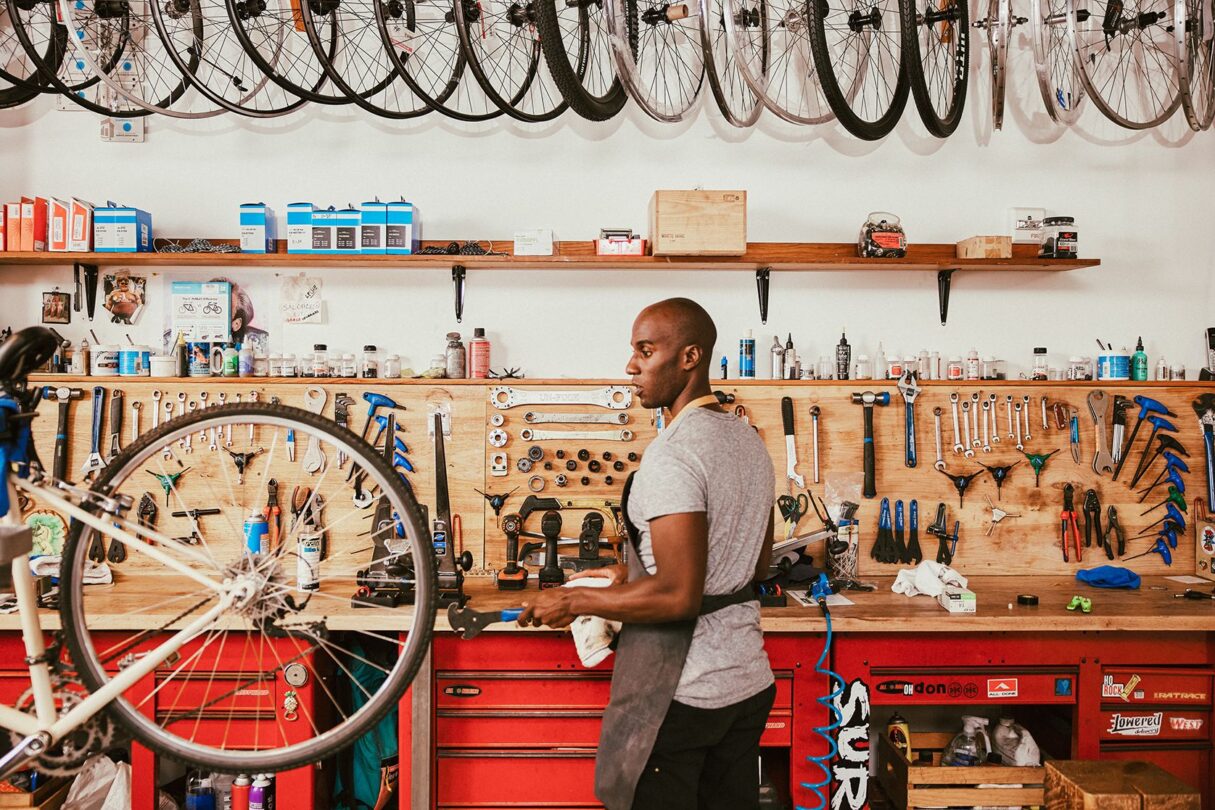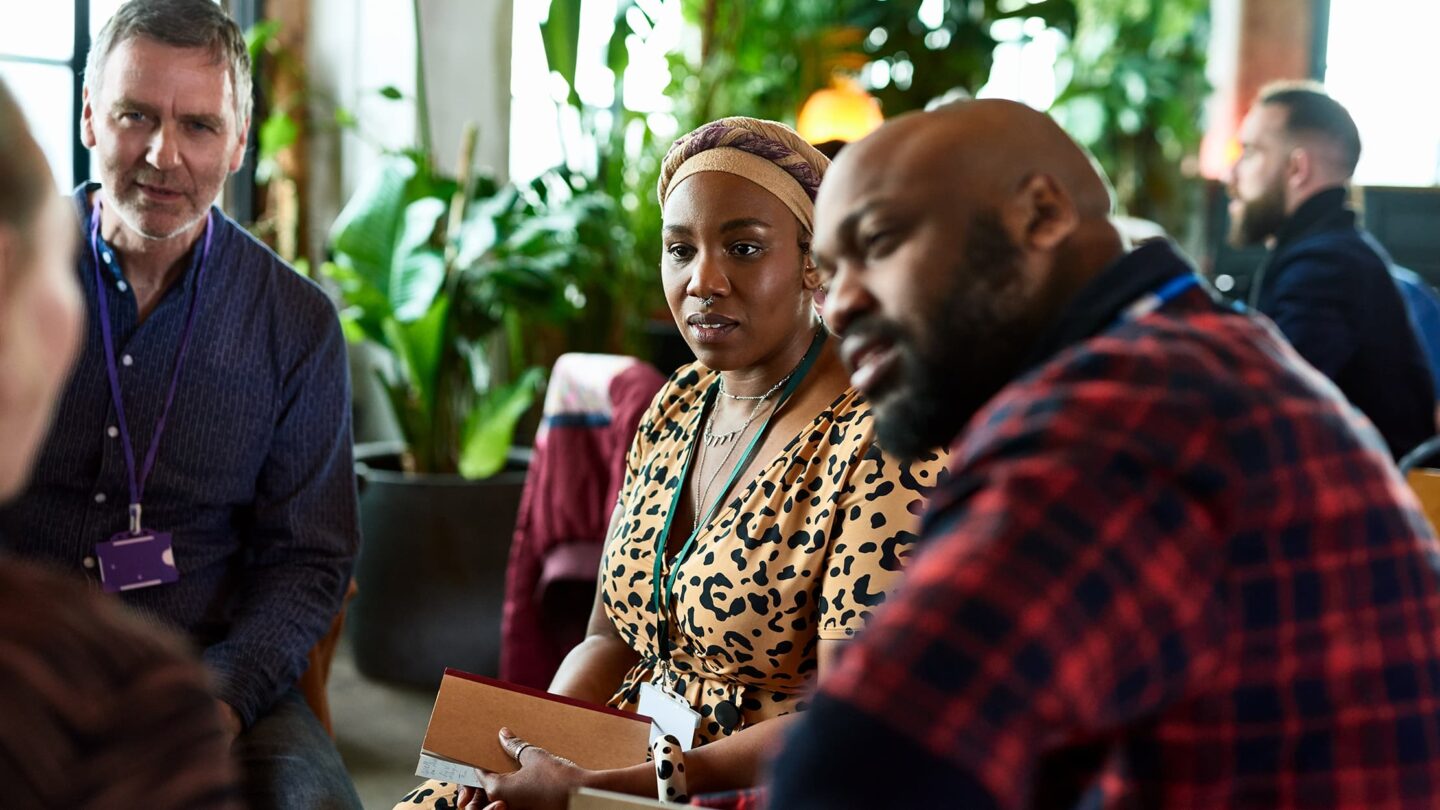Strategy, Legal & Operations
How to do sustainability right and avoid becoming a “zombie company”
Discover how to build a sustainable business model and prepare your small business for the commercial impacts of climate change.

Change isn’t coming. It’s already here.
From supply chain disruption and shifting consumer priorities, to tighter government regulations and new taxations, businesses face mounting challenges caused by rising global temperatures.
A lack of preparation risks not only profitability but survivability. This means there are businesses of all shapes and sizes that are successfully operating today but won’t be commercially viable when conditions get worse.
So, what can you do to prepare your small business?
We sat down with Leo Rayman, CEO of EdenLab, to explore why sustainability needs to sit at the most fundamental level of your organisation—the business model.
This article covers:
- How your business model affects your carbon footprint
- Why sustainable practices matter for small businesses
- The opportunities of a sustainable business model
- A real-world example from Ikea
- Are sustainable business models only for large businesses?
- 9 steps to creating a greener business
- Final thoughts
- FAQs
Discover how to reach net zero with Sage Earth
Learn how Sage Earth can help you build a greener business model and become more resilient against future challenges.

How your business model affects your carbon footprint
Your business model is the framework that outlines how your company creates, delivers, and captures value.
It encompasses every aspect of your operations, including sourcing materials, manufacturing, distribution, and waste management. Each of these components contribute to your company’s carbon footprint.
If your business relies heavily on transportation, for example, using fossil fuel-powered vehicles creates significant greenhouse gas emissions.
Similarly, if your manufacturing process involves resource-intensive practices or generates excessive waste, it can have a negative impact on the environment.
Why sustainable practices matter for small businesses
Many people view sustainability as something on a checklist that has a start and end. Almost like an additional element that’s separate from the main business activities.
This is a huge misunderstanding of the nature of the world we live in.
No matter what you sell or the industry you’re in, you rely on natural resources. Whether it’s the materials of your products, or the energy that powers your operations.
So, the conditions in which you run your business—where you get things from, how you process them, how you add value, and how you push them out and distribute them—are all going to be impacted by and potentially further affect, climate change.
Here’s an example from Leo:
“Let’s say you make fruit juice. You built your business model on the idea of importing fresh tinned fruit from South America, and processing it, packaging it, and distributing it in the UK. You do this as cheaply as you can to maximise margins and stay competitive on price.
“But because of climate change, there is eventually significant stress on the land that the fruit is grown on—whether that’s flooding, drought, wildfires, etc.
“This leads to decreased yields, and higher prices for your supply.
“Then, as conditions worsen, governments increase regulations, introduce new rules around shipping, and increase taxes on exported goods.
“Now your model has been thrown out.
“You’re no longer achieving those margins, and you’re forced to raise prices. You can’t pay employees enough, and you have to cut costs in vital areas of your business.
“Imagine that instead of importing the fruit, the company invested in developing natural flavours sourced from the UK. Bypassing the need to import ingredients means they’d face fewer regulatory challenges, and their supply chain would be much more secure.
“In terms of sustainability goals, they would be supporting local communities and producing lower emissions.”
This is just one scenario that shows just how important it is to get the business model right to protect your company from shifting environmental challenges.
The opportunities of a sustainable business model
Though operating a green business model will become increasingly essential from a commercial perspective, it also provides small businesses with new opportunities.
This is because not everyone is thinking this way yet.
Though the effects of climate change on businesses have already started, there are currently businesses that are surviving without a sustainable business model.
This won’t be the case for long.
Leo says: “Change isn’t that gradual. You might have given yourself until 2030 or 2050 to get your act together. But climate impacts will be a series of sudden drops, rises, and changes.
“If you’re not already thinking about how this could impact your business model, you’re not thinking about future revenue.
“The firms that will win tomorrow are already being formed now. There are also firms operating today that I like to call ‘zombie companies’.
In other words, they haven’t made any changes and are effectively already dead. It’s a bit like those in the printing industry who never thought about how digital would impact their business.”
If you act now, you have a huge chance to get ahead of these companies. You’ll be more prepared for the inevitable disruption, get in a better position for long-term profitability, and unlock the following advantages:
Cost savings
Sustainable practices often lead to long-term cost savings.
By reducing energy consumption, optimising resource usage, and minimising waste, you can lower utility bills, streamline operations, and increase efficiency.
Brand reputation
Consumers are increasingly demanding environmentally conscious products and services. By showcasing your commitment to sustainability, you can enhance your brand reputation and attract environmentally conscious customers.
Employee engagement
A sustainable business model also fosters employee engagement and loyalty. Studies have shown that employees are more likely to feel proud of and be motivated by working for a company that prioritises sustainability.
Regulatory compliance
Governments around the world are implementing stricter environmental regulations. By proactively adopting sustainable practices, you can ensure compliance and avoid potential penalties or legal issues in the future.
A real-world example from Ikea
Ikea embedded a sustainable value proposition as part of its business model. The project saw the Swedish furniture brand begin to sell its refurbished second-hand products in select stores.
The reduced price of these products, which are in near-perfect condition, has proven popular with consumers (even those that are less environmentally conscious), and the stores deliver consistently strong profit margins.
Are sustainable business models only for large businesses?
It may seem like you need the money and resources of a large organisation to build sustainability into your business model but that isn’t always the case.
Though it’s true you’ll sometimes need some upfront capital, your small business can be more flexible than a large organisation.
Changing and adapting to ways of working, switching suppliers, and testing innovative ideas can all happen much more quickly. This lets you build in sustainability earlier and can protect your business against sudden climate impacts.
You can also compete with larger organisations by attracting eco-conscious employees and customers much earlier, and be ready for any new regulations that may arise.
9 steps to creating a greener business
There’s no single way to build sustainability into your business model. Everything from the products or services you provide to the industry you’re serving will present opportunities.
Here are nine actionable steps to start your journey:
1. Change your mindset
- Stop viewing sustainability as a box-ticking exercise, a ‘one and done’ solution, or an additional pursuit that sits beside your main business activities.
- Prioritise this by assigning responsibility for improving sustainability at board or leadership level.
- Recognise sustainability as an exciting opportunity that delivers more resilience, commercial advantages and competitiveness.
2. Assess your current carbon footprint
- Audit your operations to understand where your carbon emissions are coming from.
- Look for areas where you can make immediate improvements, such as using energy more efficiently or reducing waste.
- Work with a consultant or use carbon footprint calculators and software to help measure and track your progress over time.
3. Set sustainability goals
- Based on your current carbon footprint, define clear and measurable sustainability goals on how much you’d like to reduce it and by when.
- Repeat this at least annually to ensure you’re always making progress and keeping sustainability as a priority.
4. Reduce consumption
- Before making big changes or investing in new ideas, look for quick-win opportunities to reduce consumption. This might be as simple as powering down premises and equipment when not in use or replacing business travel with video meetings.
5. Generate ideas through research
- Spend some time online looking at what others in your industry or category have done to build a more sustainable business model.
- You’ll be surprised at the amount of work and ingenuity that’s already out there that you could build on. From startups to giant corporates, there are plenty of examples to find a starting point.
6. Rethink your products
- If you make products, consider how long they are expected to last, and how easy they are to repair or refurbish.
- Consider redesigning products to make them easier to fix, and switch to higher quality materials that will make them last longer.
- Don’t be afraid to charge the appropriate price for these improvements.
7. Review suppliers and partners
- Review your supply chain and seek out suppliers and partners who share your commitment to sustainability.
- Consider factors such as responsibly sourced materials, ethical manufacturing processes, and environmentally friendly packaging.
- Adjust your procurement process to include a stage where sustainability is assessed for all future suppliers.
8. Engage your employees
- Educate your employees about sustainability and empower them to contribute to your greener business model.
- Encourage ideas and suggestions, and implement employee-driven initiatives to reduce waste and promote sustainable practices.
9. Explore technology and innovation
- Look for new technology to improve your operations and reduce your environmental impact.
- Good places to start are energy-efficient equipment, smart sensors, and digitalisation.
Final thoughts
The commercial impacts of climate change are already being felt by many small businesses.
Those that are neglecting sustainability, or looking at it as a nice-to-have alongside their business operations are destined to fail over the coming years and decades.
Those that are building sustainable initiatives into the ways they create, deliver and capture value are becoming more resilient, competitive and profitable.
So, try out some of the pointers in this article. You’ll discover even the smallest steps can make a difference.
Preparing your business for sudden environmental changes can help you prosper long into the future.
FAQs
How long does it take to see the benefits of sustainable practices?
The benefits of sustainable practices can vary depending on the type of initiative and the scale of your operations.
In most cases, small businesses start seeing cost savings and other benefits within the first year of adopting sustainable practices.
Is it expensive to transition to a greener business model?
A: While certain investments may be required upfront, such as energy-efficient equipment or infrastructure upgrades, the long-term cost savings and benefits often outweigh the initial costs.
There are also government grants, incentives, and financing options available to support sustainable initiatives.
How can I communicate my commitment to sustainability to my customers?
A: Incorporate sustainability messaging in your branding and marketing materials and publish your progress on your website and social media channels.
Also, look to gain some certifications or eco-labels to provide third-party validation of your sustainable practices.







Ask the author a question or share your advice